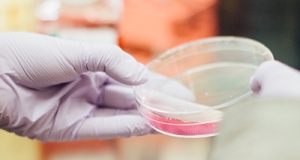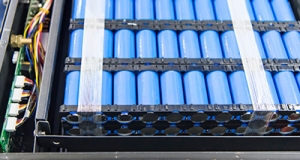A New Technique is Able to Discover Energy Producing Bacteria
A microfluid technique is able to quickly sort bacteria that is based on the capability to try and generate electricity. When you live in extreme conditions, you have to make sure that you are adaptable. You also have to make sure that you are creative as well. For example, some bacteria are able to exist in environments that are very oxygen deprived. This means that they have to find a way to breathe that does not actually involve oxygen. These microbes can be found miles underneath the ocean. They breathe by absorbing electrons, which ultimately means that they have the ability to produce their own level of electricity.
Scientists and even engineers are now exploring ways to try and harness these power plants so that they can run fuel cells. They do this with the ultimate goal of purifying sewage water. If they are able to pin down the microbe electrical properties, they will then be able to use them to their advantage.
The MIT engineers have worked hard to try and develop a microfluid technique that can process small samples of bacteria. They can then gauge a specific property that is correlated with the bacteria's own ability to process electricity. They say that this is called polarizability and it can be used to assess how much electricity a bacteria can produce. It does this in a much more efficient manner when compared to other types of bacteria and it is fantastic to see that progress like this is being made.
Only time will tell how this bacteria can be used. If this bacteria can be harnessed however then it could lead to great things in the technical recruitment industry. It could also do a lot for the engineering recruitment industry as well.
3D Printing can be made 100 Times Faster with Light
Usually, plastic filaments are being built layer by layer. Now however, there is a brand-new approach that is taking the industry by storm. It lifts complex shapes from a vat of liquid and when it does this, it can then construct the object required 100 times faster. This is especially the case when you compare it to the traditional 3D printing process. 3D printing could easily change the game forever when you look at those who work in technical recruitment or even in engineering recruitment.
Using conventional approaches is not attainable at all unless you have hundreds of machines. This statement comes from Timothy Scott who is the U-M associate professor of chemical engineering. He led the co-development of the brand-new 3D printing approach with his associate, Mark Burns. The method solidifies under the liquid resin and it uses the two lights to try and control where the resin actually hardens. It also controls where it stays fluid as well. This actually enables the team to use very sophisticated patterns when compared. They can make a very interesting 3D bas-relief in one shot. This is especially the case when you look at the 1D lines and even the 2D cross sections. The printing demonstrations include a toy boat, the block M and even lattice.
A lot of people are saying that these are some of the truest 3D printers that have ever been made. There is no telling what could happen if this is put to even better use, not to mention that it is truly incredible to see how far everything has come. Of course, there will be more updates brought to you as soon as they are released but it is safe to say that this is good news.
Electron-transferring complexes may actually give vehicles the ability to cover 500 miles for every charge. Lithium-air batteries are often seen as being one of the most promising technologies out there when it comes to future energy storage. They can store 10 times more energy when compared to ion batteries and they are much lower in weight. They are however still in development and there are a lot of questions about their stability and their efficiency. If you work in technical recruitment or in engineering recruitment, then this will be especially useful to know.
Engineers at the University of Illinois in Chicago have been working on two dimensional compounds of a huge range of transition metals. These are the elements that occupy the central block of the periodic table. This has a large amount of electrons per atom and they are also capable of being involved with bonding and even electrical activity. This is especially the case when you look at non-metals.
Lithium-air batteries use an anode that is made out of pure lithium. It has an external ambient air which acts as the cathode and it also has an aqueous electrolyte. The catalyst dissolves in the electrolyte and platinum or even cold are often used conventionally. TMDCs, or at least those that are of a two-dimensional shape have a very high level of conductivity. They also have a fast transfer rate as well.
The Chicago team have been working hard to try and collaborate with other engineers and they have also worked with material scientists as well. They are trying to use a battery with an ionic-liquid electrolyte that is then combined with a DMSO. This is a solvent, and when this reaction happens, there really is no telling how good this battery can be.
What did 2018 Achieve for the Year of Engineering?
Nusrat Ghani MP has reflected on the amount of success that the engineering world has brought. He has also looked at the momentum that has been generated by the campaign. Research has been carried out over the first 6 months of the campaign and it all shows that the percentage of 7-11 year olds who would actually go as far to consider a career in engineering has risen by well over 56%.
This is a very heart-warming statement to the commitment that the industry has to offer and it also shows that they are more than willing to show what young people actually have to offer. This is especially interesting if you have a job in technical recruitment or even engineering recruitment. The success of the campaign has been forged and this brings a very meaningful legacy. When the government made the decision to launch the Year of Engineering, it's said that they did not start out with a blank sheet of paper at all. Against this backdrop, the Year of Engineering really is about uniting work and building on the already solid foundation. It is also about uniting and joining forces across the industry, and bringing new partners on board. It is all of this that has made everything possible.
What's even more interesting to know is that museums have even opened up new pioneering exhibits. Apple and Facebook have both worked to try and meet engineers for the very first time and Siemens have also tried to work with those around them to try and make sure that they get the support that they need. This is fantastic news to say the least, and it really does go to show that there is a demand out there that is yet to be met.
Cork to be fastest growing Irish city over the next 20 years
Builders struggling to find workers as sector set to grow by 20%
“Success is not just attracting new FDI, it is also retaining it and continuing to adapt our infrastructure to ensure we meet future needs.
'Thousands of non-national construction workers will be needed to meet housing targets' - Ibec
BUSINESS GROUP IBEC has said that Ireland does not currently have enough experienced construction workers to build much-needed housing, adding that non-national workers will be needed to help with complete government plans
In its latest quarterly economic outlook published today, Ibec says that 2016 figures showed that 80,000-100,000 workers would be needed to meet government construction targets but that this has not been met.
Ibec says that just 26,000 have been added in the two years since and that there is not enough construction workers on the Live Register to make up the shortfall.
“A further 60,000 to 80,000 workers will be needed, at a minimum, to meet demand over the coming years. At the same time, there are only 33,000 workers formerly in craft or related sectors (the best proxy for construction ready workers) on the Live Register,” the report states.
https://www.thejournal.ie/ibec-construction-4426537-Jan2019/








